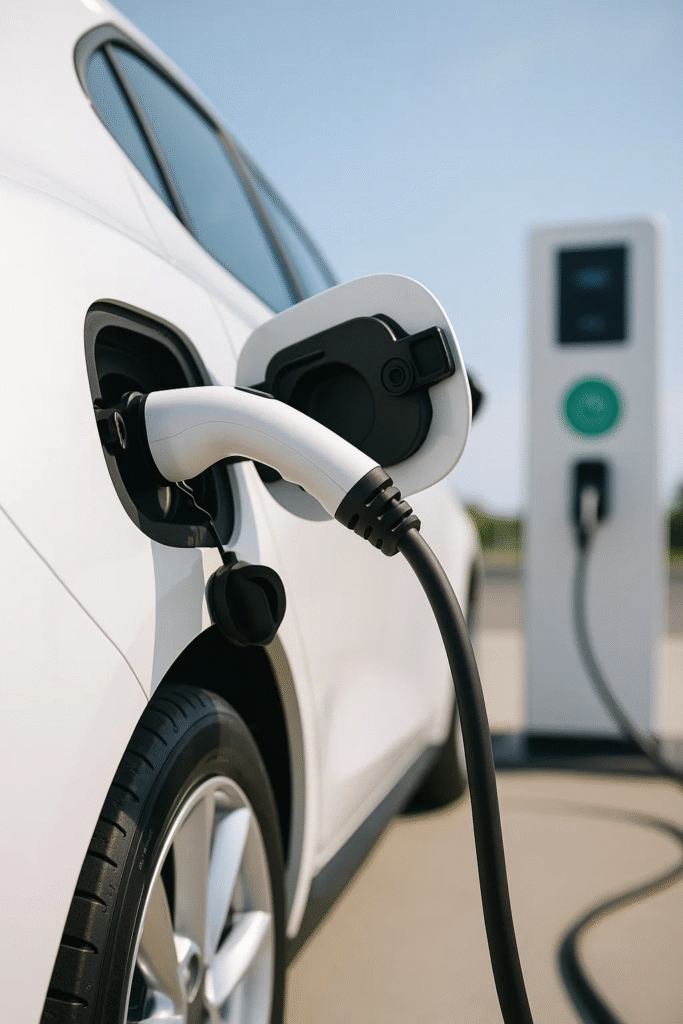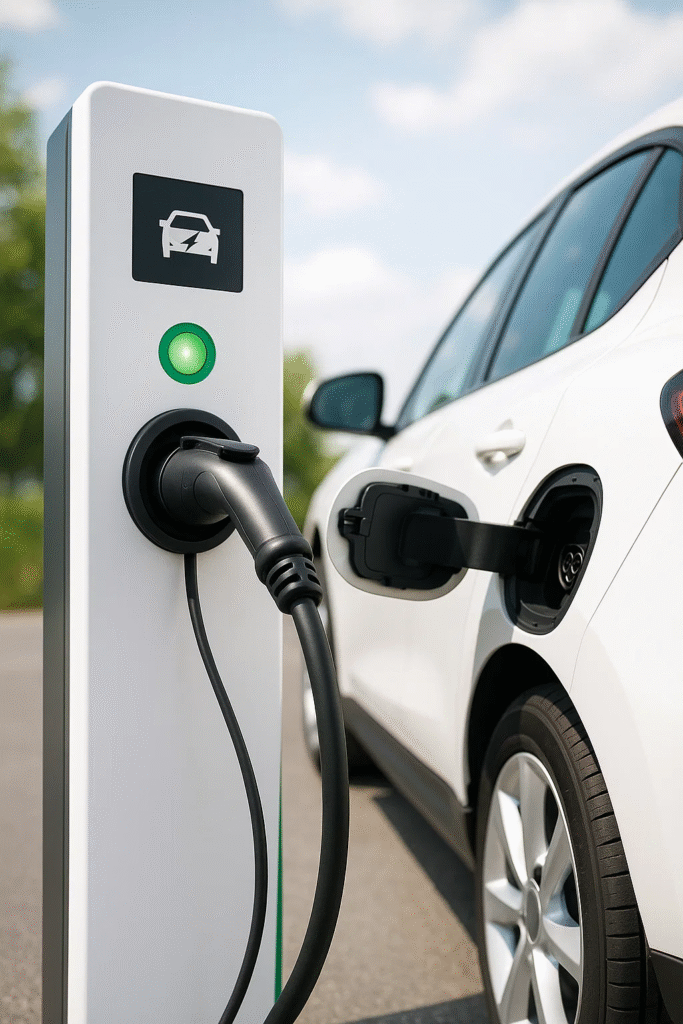Introduction
Electric vehicles (EVs) are transforming the global transportation landscape, offering a sustainable and eco-friendly alternative to traditional gasoline-powered cars. As the adoption of EVs rises, the need for efficient charging infrastructure becomes increasingly critical. EV chargers provide the necessary power to recharge electric vehicles, enabling convenient daily use and long-distance travel.
Understanding EV chargers is essential for vehicle owners, businesses, and policymakers aiming to support clean transportation. This article explores the fundamentals of electric vehicle chargers, their types, working principles, installation procedures, charging speeds, benefits, challenges, and future trends.
Understanding Electric Vehicle Chargers
An electric vehicle charger supplies electrical energy to an EV battery, enabling it to store power for subsequent use. Unlike conventional fuel stations, EV charging stations utilize electricity from the grid or renewable sources, making them more sustainable and cost-effective.
The charging process involves:
- Converting AC Power to DC – Most charging stations supply alternating current (AC), while EV batteries require direct current (DC). Chargers regulate this conversion process.
- Voltage and Current Regulation – Chargers adjust power output to match battery capacity and charging requirements.
- Charging Speed Optimization – Modern chargers include smart features to optimize charging duration while preserving battery health.
Types of Electric Vehicle Chargers
EV chargers are categorized based on charging speed, voltage, and connectivity:
1. Level 1 Chargers (Slow Charging)
- Voltage: 120V AC (Standard household outlet).
- Charging Speed: 3-5 miles of range per hour.
- Best For: Overnight charging at home.
- Advantages: Affordable and easy to install.
- Limitations: Slow charging, not suitable for frequent travel.
2. Level 2 Chargers (Fast Charging)
- Voltage: 240V AC.
- Charging Speed: 10-60 miles of range per hour.
- Best For: Home, workplace, and public charging stations.
- Advantages: Faster charging time and convenient for daily use.
- Limitations: Requires professional installation and higher initial investment.
3. DC Fast Chargers (Rapid Charging)
- Voltage: 400V–900V DC.
- Charging Speed: 60–250 miles of range in 30 minutes.
- Best For: Highway travel and commercial charging stations.
- Advantages: Quick charge times, ideal for long-distance travel.
- Limitations: Expensive infrastructure and potential battery degradation over time.
4. Wireless Chargers (Inductive Charging)
- Technology: Uses electromagnetic fields for contactless energy transfer.
- Best For: Automated charging in garages or parking spaces.
- Advantages: Eliminates cables, offers convenience.
- Limitations: Lower efficiency compared to wired charging and high installation costs.

Benefits of Electric Vehicle Chargers
Installing and using EV chargers comes with significant advantages:
- Convenience: Home charging eliminates reliance on fuel stations.
- Cost Savings: Electricity is more affordable than gasoline.
- Environmental Sustainability: Reduces carbon footprint and promotes clean energy adoption.
- Increased EV Adoption: Expanding charging infrastructure encourages more drivers to switch to electric cars.
- Improved Grid Integration: Smart chargers help balance power demands efficiently.
- Government Incentives: Many regions offer tax credits or rebates for charger installations.
Installation Guide for EV Chargers
Proper installation ensures efficient charging and system longevity. The installation process includes:
1. Assessing Charging Requirements
- Determine daily mileage and battery capacity.
- Choose between Level 1, Level 2, or DC fast chargers based on usage.
2. Selecting an Installation Location
- Home chargers should be placed in garages or driveways.
- Public stations require accessible spots for multiple users.
3. Electrical Panel Evaluation
- Ensure electrical capacity meets charger specifications.
- Professional electricians may need to upgrade wiring.
4. Installing the Charger
- Wall-mounted or pedestal charging units are installed.
- Circuit breakers and wiring are properly connected.
5. Testing and Configuration
- Chargers undergo safety inspections and operational testing.
- Smart charging settings are configured for optimized energy use.
Challenges in EV Charging Infrastructure
Despite its benefits, EV charging faces several challenges:
- High Installation Costs – Setting up Level 2 and DC fast chargers requires substantial investment.
- Limited Charging Networks – Rural and remote areas often lack sufficient charging stations.
- Battery Degradation – Frequent fast charging accelerates battery wear.
- Standardization Issues – Different EV models require varying charging connectors.
- Grid Demand Management – Large-scale charging can strain the power grid, necessitating smart grid solutions.
Future Trends in Electric Vehicle Charging
EV charging technology is continuously evolving with innovative advancements, including:
1. Ultra-Fast Chargers
- Next-generation chargers delivering 350 kW+ speeds.
- Reduced charging times to under 10 minutes.
2. Vehicle-to-Grid (V2G) Integration
- EVs contribute excess battery power back to the grid.
- Enhances energy stability and demand management.
3. Solar-Powered Charging Stations
- Renewable energy reduces dependency on fossil fuels.
- Sustainable charging solutions for homes and businesses.
4. AI-Based Smart Charging
- Adaptive charging schedules optimize battery health.
- Automated station location recommendations for drivers.
5. Wireless and Autonomous Charging
- Inductive pads in roads enabling charging while driving.
- EVs automatically parking and aligning with wireless chargers.

Conclusion
Electric vehicle chargers are a fundamental component of the EV ecosystem, providing efficient power solutions for homes, businesses, and highways. With advancements in charging speeds, renewable energy integration, and smart grid connectivity, the future of EV charging promises greater accessibility, affordability, and environmental benefits.
As global efforts continue to transition toward clean transportation, expanding charging infrastructure and refining technology will be critical in driving widespread EV adoption. Whether through home chargers, public stations, or innovative solutions like wireless charging, the evolution of EV chargers is paving the way for a greener and more sustainable future.
